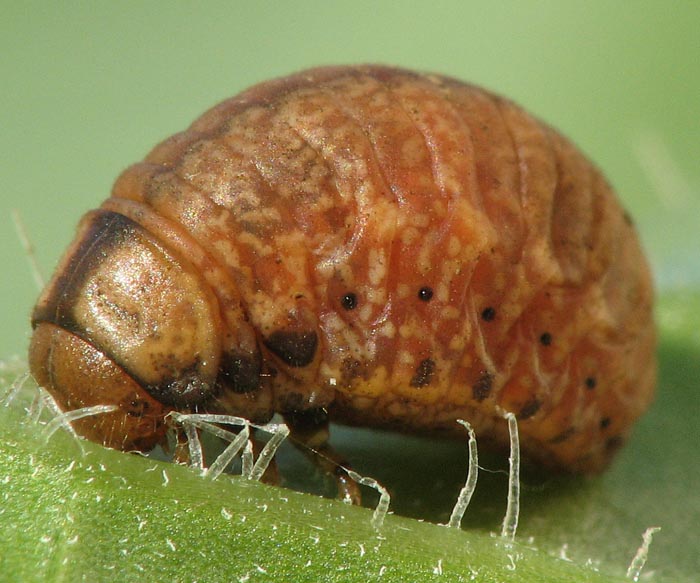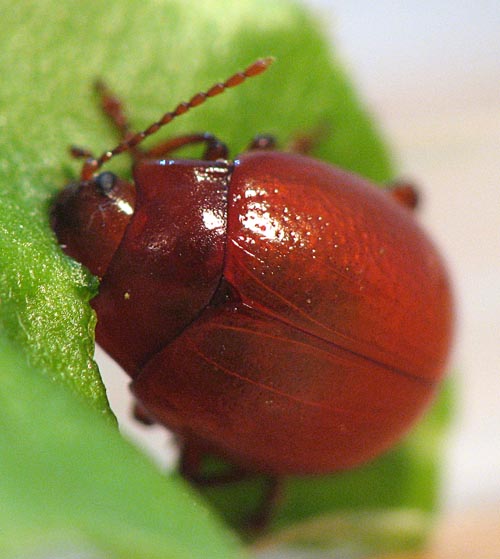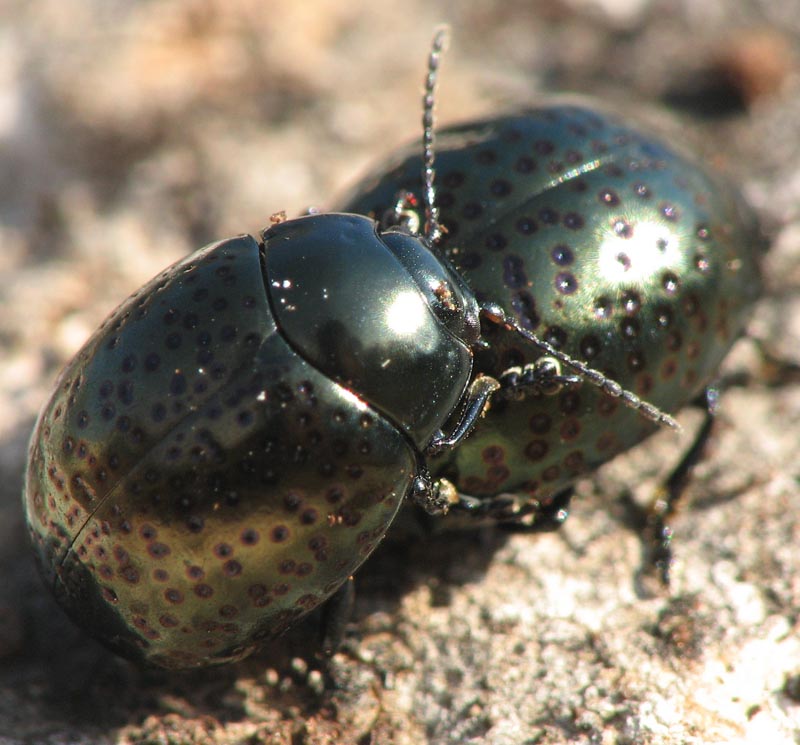|
|
|
|
|
Galleria Tassonomica
di
Natura Mediterraneo
|
 Nota! La determinazione degli insetti necessita quasi sempre di un'indicazione geografica e temporale precisa. Nota! La determinazione degli insetti necessita quasi sempre di un'indicazione geografica e temporale precisa.
Invitiamo quindi gli utenti ad inserire questi dati ogni volta che viene richiesta una determinazione o viene postata una foto di un insetto. I dati forniti dagli utenti ci consentiranno anche di attribuire un valore scientifico alle segnalazioni, contribuendo a migliorare e integrare le attuali conoscenze sulla distribuzione delle specie postate.
|
|
| Autore |
 Discussione Discussione  |
|
|
Assaf
Utente V.I.P.
  
Città: Haifa

343 Messaggi
Flora e Fauna |
|
|
Assaf
Utente V.I.P.
  
Città: Haifa

343 Messaggi
Flora e Fauna |
 Inserito il - 23 gennaio 2008 : 02:18:54 Inserito il - 23 gennaio 2008 : 02:18:54


|
In another place I found 4 eggs on Silybum that turn into this larva.
Length 9mm:

106,22 KB
After reaching this larva stage they all dig into the ground. |
Modificato da - Assaf in data 23 gennaio 2008 02:22:15 |
 |
|
|
MarcoU
Utente Senior
   

Città: Codevigo
Prov.: Padova
Regione: Veneto

697 Messaggi
Flora e Fauna |
 Inserito il - 25 gennaio 2008 : 11:24:37 Inserito il - 25 gennaio 2008 : 11:24:37


|
This is a Chrysolina of the subgenus Ovosoma.
Most probably it is Ch. halysia, the only species of this subgenus recorded for the Near East (Bienkowsky, 2001).
However the very similar Ch. sahlbergi is so far recorded from Turkey, Cyprus, Caucasus and Iran. It would be wise to ascertain diagnostic characters in order to give an unquestionable identification.
The larva is doubtless a Chrysomelidae larva and it is likely to be a Chrysolina. Pupation in the ground is the rule for these beetles, so if you keep the soil in suitable conditions you will soon see adult emerging.
Let us know...
Cheers, Marco |
 |
|
|
Assaf
Utente V.I.P.
  
Città: Haifa

343 Messaggi
Flora e Fauna |
 Inserito il - 13 febbraio 2008 : 02:42:46 Inserito il - 13 febbraio 2008 : 02:42:46


|
Thanks for the help.
What sould be suitable soil conditions for the larva? Should I keep it moist as a probably happen if the winter rain hit it or should I just leave it and wait for the adult?
Assaf |
 |
|
|
MarcoU
Utente Senior
   

Città: Codevigo
Prov.: Padova
Regione: Veneto

697 Messaggi
Flora e Fauna |
 Inserito il - 13 febbraio 2008 : 09:17:36 Inserito il - 13 febbraio 2008 : 09:17:36


|
Well, this is a guess, since I do not know the local conditions of your area.
Anyway, if you leave as it is it will probably get competely dry (I suppose it is in a box with some holes for air recycling).
So, spray some water, keep it moist, but not wet. Avoid excess of water and the creation of a hard crust on the surface.
|
 |
|
|
Assaf
Utente V.I.P.
  
Città: Haifa

343 Messaggi
Flora e Fauna |
 Inserito il - 13 febbraio 2008 : 09:32:25 Inserito il - 13 febbraio 2008 : 09:32:25


|
| Ok I'll let you know when somthing interesting will happen. |
 |
|
|
Assaf
Utente V.I.P.
  
Città: Haifa

343 Messaggi
Flora e Fauna |
 Inserito il - 16 febbraio 2008 : 00:38:18 Inserito il - 16 febbraio 2008 : 00:38:18


|
Ok Chrysolina just hatched from the ground after about a month. I took some photos with my home light but I'll have to wait for the morning to take good one. looks like Chrysolina blanchei can anyone confirm?
I didn't know they eat Silybum.
Immagine:

75,28 KB |
 |
|
|
StagBeetle
Moderatore
    

Città: Ancona
Prov.: Ancona
Regione: Marche

6321 Messaggi
Tutti i Forum |
 Inserito il - 28 marzo 2009 : 15:02:28 Inserito il - 28 marzo 2009 : 15:02:28


|
Scusate se riprendo questa vecchia discussione...
Mi sto riguardando tutti i post...
| Messaggio originario di Assaf:
Chrysolina 2:

121,39 KB
|
Come diceva Marco dovrebbero essere Chrysolina sahlbergi.
E' uguale a queste; mentre la C. halysia mi sembra diversa (vedi qua....
Che ne pensate?
Su quella rossa cosa dite?
Ciao
Giacomo |
 |
|
| |
 Discussione Discussione  |
|
|
|
 Natura Mediterraneo Natura Mediterraneo |
© 2003-2024 Natura Mediterraneo |
 |
|
Leps.it | Herp.it | Lynkos.net
|

 Forum
|
Registrati
|
Msg attivi
|
Msg Recenti
|
Msg Pvt
|
Utenti
|
Galleria |
Map |
Forum
|
Registrati
|
Msg attivi
|
Msg Recenti
|
Msg Pvt
|
Utenti
|
Galleria |
Map |